Photo: The Western Spirit Transmission line, which was developed and constructed by Pattern Energy Pattern Energy
All the bold plans to electrify homes, industry and transportation along the West Coast depend on importing more electricity. For states putting a premium on renewable power, getting new wind and solar energy from Nevada’s solar arrays or Wyoming or Texas wind farms is crucial. Without new transmission lines, the electrification plans are no more than that – plans.
So transmission lines have been cropping up steadily around the Southwest, driven also by the nationwide scramble to meet President Biden’s goal of a carbon-free energy sector by 2035. The nation could need up to 20,000 new gigawatt-miles of new transmission by then to meet its renewable energy goals, according to a report from the Department of Energy – a 57 percent increase. (A gigawatt-mile is the unit used when planners model needed future transmission capacity; it incorporates both a line’s distance and its capacity to carry electricity.)
The Southwest is a prime provider of both solar and wind energy, according to Amy Miller, a consultant who has experience with energy and environmental projects. California’s grid operator recently signed off on $7.3 billion worth of power lines for dozens of new transmission projects to be built in California and Arizona in the coming decade. They will support the development of 40 gigawatts of new generation resources, enough to power 30 million homes.
California’s experience last year shows what is possible: the state used renewable energy to provide 27 percent of its state-generated power in 2022. About 30 percent of the energy imported from out of state came from renewables. And twice last year, in the early afternoon of April 30 and again on May 8, renewable energy was briefly able to power the state all by itself. Imported wind and solar power were essential to that outcome.
The current national push to bring renewable energy to big urban markets is following a path that California pioneered about two decades ago and has intensified since. Its policies emphasizing renewable energy and the size of its market (if California were a country, it would have the fifth largest economy in the world) is driving much of the transmission industry in the Southwest.
Nevada has been sending solar-powered energy into California for years. Wyoming’s expanding wind farms hope to do the same for California and nearby states. Now New Mexico is readying itself to join them. To do so, it will need more transmission.
New Mexico’s planned lines show the promise and hazards of expanding transmission

New Mexico’s large wind farms are multiplying but are landlocked, away from population centers and existing transmission lines. “We had all these renewable resources and no transmission to access them,” says Fernando Martinez, director of the New Mexico Renewable Energy Transmission Authority.
Major transmission line projects can take up to 15 years to secure approval. Energy companies map out corridors for the lines, identifying the best route to run a line and deliver energy to where it’s needed. This lengthy period is partially because of the right-of-way process, during which energy companies need to secure landowners’ approval to erect high towers and the high-voltage energy lines they support.
The most ambitious entry into the transition marathon is the TransWest Express Transmission Project, whose developer is a wholly-owned subsidiary of the Denver-based Anschutz Corporation. TransWest has received approval from the federal Bureau of Land Management. It will cover a 732-mile route from Wyoming to Nevada and carry up to 3 gigawatts of power.
Two other big new projects are based in New Mexico. The planned 400-mile New Mexico North Path line, which is currently seeking the necessary approvals before construction can begin, would carry up to 4 gigawatts of renewable energy. The longest transmission line planned in New Mexico is SunZia, which had long been under development when it was purchased last year by the San Francisco-based firm Pattern Energy.
SunZia’s path to completion has always been fraught
SunZia would carry 3 gigawatts of electricity more than 525 miles, from central New Mexico to south-central Arizona. And its developers had to acquire the rights to cross all the land along the way — a circumstance faced by all long-distance transmission projects.
Projects aim to rewire the Southwest

Sources: Pattern Energy, TransWest Express, U.S. Energy Information Agency
Complications inevitably arise, with multiple state, federal and local agencies needing to weigh in, not to mention dozens of landowners. Land ownership in the West is like a jigsaw puzzle, with pieces of federal, state, local and private ownership intermingled. And using public lands with environmental significance can arouse vocal opposition.
There are some areas that developers of transmission lines try to avoid: critical species habitats, archaeological and cultural heritage sites, and holy tribal sites.
For 15 years, before it was bought by Pattern Energy last year, the SunZia transmission project has been getting the necessary federal and state approvals for a line from central New Mexico to central Arizona. SunZia received final approval from the BLM in May. Pattern plans to build SunZia Wind, a large wind energy complex near Corona, New Mexico that crosses Lincoln County, San Miguel County and Torrance County; it just selected a company to build the turbines.
Local opposition to the SunZia line remains active

But over the years of SunZia’s development, local environmental opponents’ lawsuits have added delays.
The line’s destination is Coolidge, Arizona, 45 miles southeast of Phoenix. Environmentalists in Arizona remain concerned about SunZia’s route through the lower San Pedro River Valley, one of the largest unfragmented landscapes in the state. The area is home to a number of endangered species. Many groups have worked to protect the San Pedro River, and areas with water are even more crucial in dry states like Arizona and New Mexico.
Peter Else, chairman of the Lower San Pedro Watershed Alliance — and a force behind an earlier, unsuccessful lawsuit — filed a new lawsuit in Arizona in January against the Arizona Corporation Commission, the agency that approved modifications to the path of the SunZia lines. The lawsuit argued that the agency “has approved ripping up the San Pedro Valley so that SunZia can transmit New Mexico wind power to California…”
Others feel it is unfair for Arizona to take the brunt of the negative environmental impact from the transmission lines that will be used to transport energy to states like California. John Welch, director of the Landscape and Site Preservation program at Archaeology Southwest, believes the onus is on the government, given that transmission lines often run through government lands and it is the government who ends up compromising with energy companies on which land can be used. The lower San Pedro River Valley is a pretty significant compromise, he says.
“Why couldn’t they use the existing industrial corridors along interstate highways whose landscape has already been altered?” Welch asked.
But, in a counterpoint to the local environmental complaints, the national Audubon Society just released a report praising Pattern’s work developing the SunZia line. “Renewable energy projects can have large footprints, and extreme care must be taken not to disrupt our most important natural resources,” the report said.

It added that Audubon has worked closely with Pattern in developing the lines’ routes. “Companies like Pattern Energy and conservation groups including Audubon have spent years working together to understand and take every effort to avoid, minimize or mitigate impacts to wildlife while fighting climate change.”
Kevin Wetzel, assistant vice president of business development at Pattern Energy, said that while the most economic option for a transmission route is a straight line, Sun Zia developers did “extensive routing analysis” to find the best compromise.
“There’s no way to build transmission that is going to gain 100 percent acceptance by every single stakeholder,” Wetzel said. Sun Zia is engaging in other environmental initiatives to offset any environmental impacts, he said, like installing bird diverters and building a sandhill crane breeding ground.
Sandy Bahr, director of the Sierra Club’s Grand Canyon chapter, said that her organization doesn’t oppose all transmission lines and often doesn’t oppose any specific line, but may object to its route. The club prefers that companies route transmission lines along transportation corridors because those habitats have already been fragmented. “We don’t want to just become a pass through or an energy colony,” Bahr said.
Advocates for the line point to its economic benefits

Transmission advocates argue that the lines can offer some benefits to the communities they pass through are present in. Energy companies promise that transmission lines will bring jobs to rural areas; Pattern Energy says that SunZia will create more than 10,000 new construction and operation jobs. Invenergy Transmission, the company behind the North Path line, is working with communities to support trade programs and build and train the workforce of the future that will be needed for wind farms, solar farms and transmission lines.
But for some, the promise of jobs isn’t enough. Some don’t want lines on their land because it obstructs views that attract tourism, or because it passes on land that is culturally or environmentally significant to them. The San Carlos Apache tribe wrote a letter to the Bureau of Land Management to express their concerns with the SunZia line as well, requesting a “thorough reconsideration of alternate routes.”
“The Valley is home to more than 60 landforms named and remembered in our Apache language,” wrote tribal chairman Terry Rambler. “The Valley also hosts thousands of localities having religious, cultural, historical and archaeological importance to Apache, Tohono O’odham, Hopi and Zuni peoples.”
Despite opposition, plans for the SunZia line move forward, as do plans for other transmission projects. Arguments between advocates of renewables and advocates of undisturbed ecosystems will only become more common as transmission companies attempt to strike a balance between moving full-steam ahead to deliver renewable energy and working with local communities to protect their interests.

























